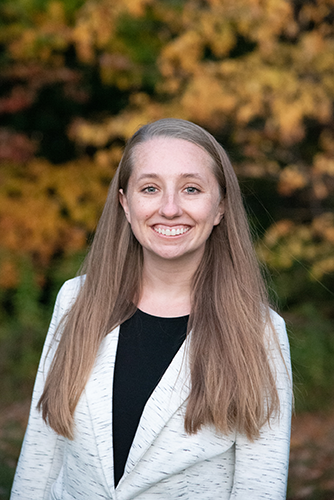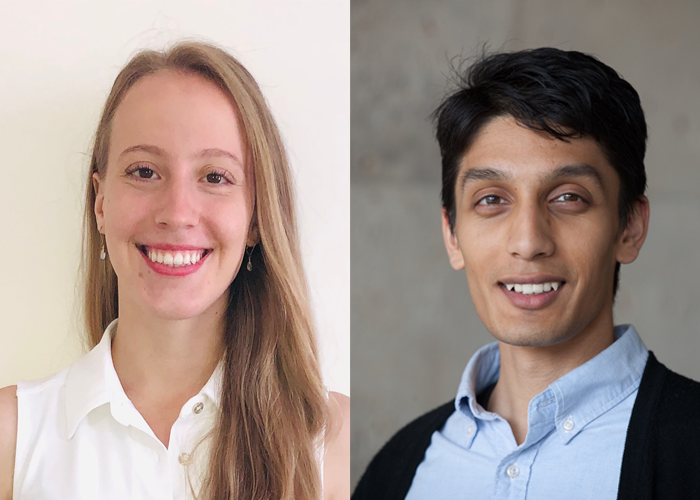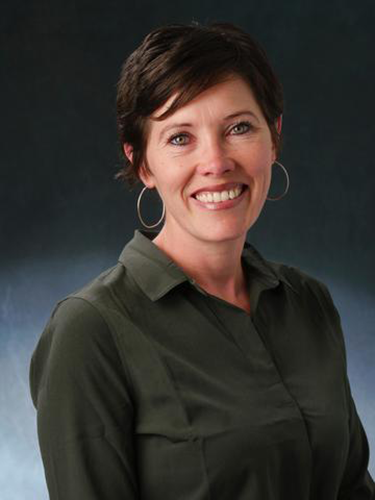Building Community through Diversity Iniatives

In 2021, the School of Engineering & Applied Science issued a five-year plan to better incorporate Diversity, Equity, Inclusion, and Belonging (DEIB) initiatives within the engineering community. The initiatives, which seek to facilitate a diverse and inclusive environment in the engineering school, are divided into six action areas that promote DEIB ideals across different aspects of the engineering school. From 2020-2021, initiatives included diversity-based training for SEAS members, assess current demographics across the SEAS community, and communicate the information to the SEAS community.
The DEIB Committee that formulated these initiatives are a coalition formed from SEAS staff, graduate students, postdoctoral fellows, and faculty that span across SEAS. Members of the DEIB Committee rotate out every year to incorporate new perspectives in the SEAS community. The Q&A below showcases some of the work the DEIB Committee has done, and the work that future committee members are planning for the upcoming academic year.

Julianne Rolf; Ph.D. student, Department of Chemical & Environmental Engineering
How have you been involved in DEIB initiatives in the past?
I started as a Ph.D. student at Yale in 2017. In 2018, I joined the Equity and Job Search Committee to serve as Co-chair of the 2019 Symposium – that started it all. During that time, I got to meet a lot of great people who were also working on these issues, and I feel like it made a positive difference with faculty and students. In 2019, I was then asked to join the Title IX Graduate and Professional Student Advisory Board to work on campus-wide Title IX initiatives and host workshops in my department.
What did you learn in your role about DEIB principles as a Co-chair in the Equity and Job Search 2019 Symposium?
You really can't deal with this stuff unless you talk about it – it's always going to be awkward in the beginning. Things are always changing. We're all learning and I think it's important to focus on that. We're not going to make things easier for other people if we're not going to do the work ourselves by participating.
What’s your role on the new DEIB Committee?
I'm working on the “Infusing Diversity” subcommittee. Overall, we’ll be creating a sense of belonging within SEAS. Having events geared towards everyone could be helpful to creating more opportunities to network within SEAS, helping facilitate more collaboration and impact internally.
The workshops hosted by the Poorvu Center on Inclusive Teaching were great. The traditional lecture style is not the best way for students to learn actively, because STEM can be really technical. Having workshops for faculty to incorporate DEIB initiatives in their classes is good. One of our objectives is to incorporate those principles into classes – we'll be working with faculty on how to do that and doing it in a way that doesn't take away from the material that students need to learn.

Stephanie Woodman; Ph.D. Student, Department of Mechanical Engineering & Materials Science
Vijay Jain; Postdoctoral Fellow, Department of Applied Physics
What started your interest in Diversity and Equity work here at Yale?
Vijay: The way the world/country looks is not how our department or field looks. Maybe we don't need to recreate the demographics entirely, but the beauty of the country and society we live in is that we all have different worldviews and perspectives, and I think that's what enables us to be a forward thinking and progressive society. We're constantly entertaining different ways of solving problems. And at the core, science is about solving problems and communicating. A large motivation for me joining this committee and trying to be a part of the DEIB efforts is communication. I don't think it's exclusive to the challenge of DEIB, it's generally a challenge in scientific communities. If it can be improved, it can have a dramatic impact in both regards.
Stephanie: We want to create an environment where we can do better science, and all people should be able to be a part of creating that future. As a woman in STEM, I've had some experiences in my life where I've been disregarded or ignored, and there's times in my life where I thought, "Maybe it's because I'm new." But throughout your academic career, it becomes a pattern, and as you grow in your confidence, you realize you should have a seat at that table. And you realize your voice should not be hushed.
What did you do as part of the DEIB Committee?
Stephanie: The year prior, each department had written these big departmental action plans. These documents did not have a specified length, and they did not have anything specified. We started by creating an introduction and action plan. We collected data and surveys from people and distilled everything into a list of things that would be ideal for us to include in our action plan to submit to the university. We were able to distill these departmental documents into a condensed document that was only one page. It's on the diversity website. It has bullets -- what we want to accomplish, year one, year two, year three, year four, year five.
Vijay: A lot of us were looking for accountability metrics. We didn't want it to seem like we came up with this plan just to satisfy the Dean's task, but we wanted to make it an actual honest and implementable plan.
What were some of the challenges in your time serving in the DEIB Committee?
Stephanie: (SEAS Associate Dean) Sarah Miller was amazing in organizing our efforts. The committee isn’t a huge group, and initially, we didn't know each other – we were meeting everyone when we were getting into it. There also wasn’t a lot of planning going in. Sarah gave these departmental plans, which were much longer documents than the consolidated one we ended up submitting to the university as a whole. When we asked the other departments for feedback, they distilled their favorite action items to take. So, we were able to comment on these action items, discuss which of these would be the most effective, and talk about which of these would have more priority in the first year or the fifth year of the DEIB plan.
Vijay: I think you really emphasized the enabling aspect with Sarah. She was the captain that steered the ship, or the conductor that leads the orchestra. And in an orchestra, everyone has their flair or interpretation, but you need that one person to keep everyone at that same point in the music, and that was Sarah. Sarah helped us define ideas that are difficult to define.
We were given ownership to pick the things we saw in the departmental plan that resonated with us, to find the people on the committee that had mutual interests in, and to pick one of those things and ride with it.
What were some of these action items?
Vijay: I know one of the things that we designed and implemented was having a SEAS-wide diversity statement. And some people might think, "well, a statement, what does that say?" I think that's a really big first step. I pushed for this in my institute -- we take the SEAS statement and include it on our website. Most people that are looking for opportunities these days, and if you don't see something that speaks to an interest and desire to change things, and an honest admittance, people won’t want to work for them because there are other organizations that are prioritizing this. And having written a diversity statement which will evolve throughout time, something which will bring together the whole school, is powerful.
Stephanie: For year one, we really wanted to hire a point person. Like, someone in the Dean's Office who knew this list and knew this committee and could work closely to get stuff done. That was something we put on our action plan.
Vijay: Another really big thing that committee member Ethen Lund spearheaded was having an online diversity presence. He wireframed a diversity webpage, and with Steve, they made it work.
Who was the DEIB Committee composed of?
Vijay: It was really valuable to have a lot of members of the staff involved in the discussion as well. I think they see things over time, I think they see things that we don't pay attention to because we're so lost in the details. It was really valuable to have that comprehensive experience to tackle some of these well-defined challenges.
Stephanie: That's why it was so important that we had a committee that had stakeholders at every point in the university. We had staff, we had graduate students, we had postdocs, we had faculty. We had people from every community involved.
 Sarah Miller; Associate Dean, SEAS
Sarah Miller; Associate Dean, SEAS
What did you do on this project?
I’m the Associate Dean for the School of Engineering & Applied Science, so I was in charge of directing the DEIB Committee. Diversity and Inclusion have always been part of my career. With engineering, we have such a dearth of representation from many diverse backgrounds, so we have more work to do compared to some of our counterparts, and therefore, we have more opportunity to do good work.
As someone leading the DEIB Committee, what was the timeline of your efforts?
I started just before the pandemic, but I'd like to think that inclusion has always been important to the School. It may have not taken the form of a formal five-year plan, like the one we recently shared, but it's always been something that's important, and it's something that's been critical for our field since its inception. The specific projects that the committee has been working on come directly from our SEAS unit plan. Dean Brock had each of the departments write an inclusion plan. Each department has its own flavor or approach. When we formed our engineering unit to write our plan, we had the input of each of the departmental diversity plans. We were able to compile each of the perspectives of the departments into something that felt like an aggregated school plan. We did it in a very systematic, engineering-centric way. We took all the inputs. We evaluated them. We combined like ideas, and we followed the instructions of the planning process to identify five priorities for each of the next five years.
It's a five-year project. We've done Year One -- this academic year is Year Two. And then, when we're done, it's not like "we're done." We just identify new priorities to take on each year, recognizing that we're going to continue working on the priorities from last year.
What are some of the goals for the incoming committee to work on?
We've got five different goals, so the committee is divided into five subcommittees. Each of the groups is meeting over the summer to discuss how they want to implement their group. One of our faculty members (Rebecca Kramer-Bottiglio) won an NSF grant to bring diverse speakers to campus – that's one of our goals this year. So, we're going to launch a nomination process, in which anyone from SEAS can nominate anyone they'd like, and the committee can review those, and Dr. Kramer-Bottiglio can invite those speakers through her NSF funding.
I've heard from other students I've interviewed that our plan was only one page -- I feel like that really epitomizes the School of Engineering & Applied Science.
I think that's so true. One thing I love about being an engineer and working with engineers is that engineers are do-ers. We can philosophize and talk about principles and rationalize, but fundamentally, this is inclusion work that needs to get done. We all understand why.
I really am proud of all the professional development engagements we had. I have gratitude to all the facilitators and all the people who got involved. I'm glad we now have a diversity website. There's always room to improve, but we have a landing page, and a diversity statement. We have a place to post our progress. And I think that's what's important -- the accountability to share what we've been doing regularly.
Q&A conducted by Kevin Pataroque (He/Him/His), a rising second year Environmental Engineering Ph.D. student in the Elimelech Lab. A recent graduate of Case Western Reserve University, Kevin seeks to make scientific research accessible and relevant beyond the laboratory. His research areas include desalination processes, membrane technology, and clean water equity.

